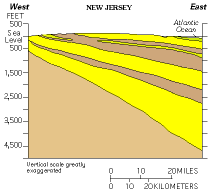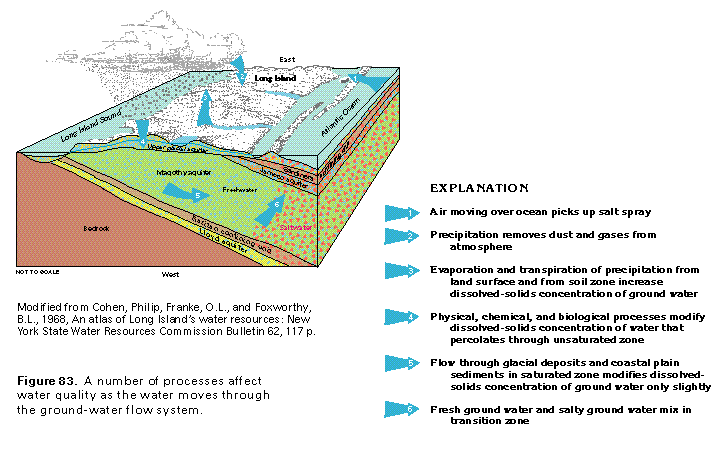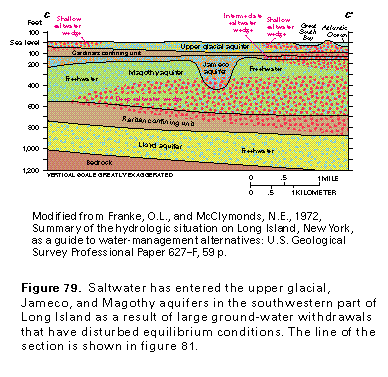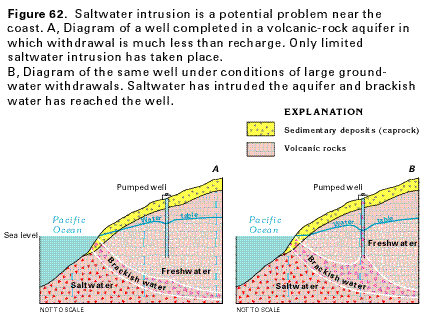Semiconsolidated sand aquifers are composed of sand interbedded with silt, clay, and minor carbonate rocks. The aquifers underlie the Coastal Plains of the eastern and southern United States, and they are of fluvial, deltaic, and shallow marine origin. The aquifers are in a thick wedge of sediments that dips and thickens coastward; in places, the sands of the aquifers are more than 650 meters thick.
![]()

The like other aquifers hydraulically connected to saltwater environments, Coastal Plain Aquifers are heavily impacted by adjacent seawater. The interface between seawater and freshwater is determined by the thickness of freshwater resting upon the seawater. If ground-water withdrawals become too great, this interface can move inland and cause seawater intrusion. Excessive pumping can cause and upwelling of seawater, resulting in localized contamination of the aquifer.


The diagram below illustrates the upwelling contamination of an aquifer. This example is a volcanic aquifer, but the principals are the same for any aquifer type.
